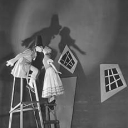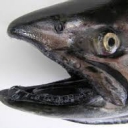@Booberg Slew rate in electronics does not itself alter phase (arguable) as it is a byproduct, but there are countless things in most circuits which do alter phase. We use capacitors to block the DC voltages between different stages of the circuit so the DC voltages which set operating points for those stages don't interact with each other and alter the operating point of the other, these capacitors form filters with the resistances around them, phase is a much more fluid thing in the real world and less perfect than in the digital world. Sometimes we design out these capacitors to avoid these effects and directly couple the various stages in a circuit but this creates a teeter totter effect, altering one stage affects the others so you have to adjust them all and rebalance everything. But slew rate is not an issue in something like the transistor ladder since its effects will be insignificant compared to the effects of the filter unless the the cutoff is all the way up and Q all the way down and even then would likely be lost behind the circuits distortion and noise.
I do not know of any really good software transistor ladders, most if not all mimic the circuit as a whole instead of the individual stages which make up the circuit, this largely removes the highly interactive nature of the the stages and the controls but it is more CPU efficient and makes the filter respond as most people expect a filter to respond. The filter has four major components from the audio standpoint, input amp, the transistor ladder itself, the recovery/output amp, and the resonance path, each of these tailors the frequency response and distortion characteristic of the overall circuit and each of these influences how the others do this. Generally the primary source of distortion is the output amp loading down the ladder, but we can also overdrive the input for a different sound and high resonance settings will overdrive the ladder itself, changing the filters frequency can completely remove the distortion effects of the output amp and make the other sources primary and they each have a very different sort of distortion. We have four distinct sources of distortion and tone shaping besides the ladder at the core and all but the input circuitry are affected to some degree by the cutoff control voltage since changing the cutoff changes how the ladder loads the output amp which changes how the resonance path drives the core and loads the output stage. I know of no emulations which bothers to model all of this, they seem to all fixate on getting that handful of stereotypical sounds and call it good because they know that the first thing most people are going to do is set it for one of those sounds and if it gets that sound they will be convinced of it's authenticity, most have not spent enough time with the real thing or done extensive analysis of the circuit, they only know those stereotypical sounds, not how it responds to the musician.
Edit: I don't know if any of this actually matters or if anyone would notice the difference between the simplified emulations and an accurate one, musicians tend to be more practical than engineers and the practicality of my musician side lost out to my curiosity in such matters long ago. The real thing does respond much more like an acoustic instrument than an electronic instrument, which is why the mini was the first big success in synths, but I am not sure that plays any role these days.
LTSpice may be available for OSX, I don't actually know now that I think about it, if you have wine installed the windows version runs perfectly there. Check their site, it is free. I do not believe you would be able to run its circuits with other simulators but I could be wrong, the file syntax might just be plain old Spice.





 I guess it's hard to find one definitive answer but I feel better about my assumptions at least.
I guess it's hard to find one definitive answer but I feel better about my assumptions at least. It's just hard finding data on it.. I've been working on a "ladder filter" that has some burn to it from just clipping but maybe the slewlimit of the transistors could be what it is lacking. Time to look up some datasheets i guess
It's just hard finding data on it.. I've been working on a "ladder filter" that has some burn to it from just clipping but maybe the slewlimit of the transistors could be what it is lacking. Time to look up some datasheets i guess 

